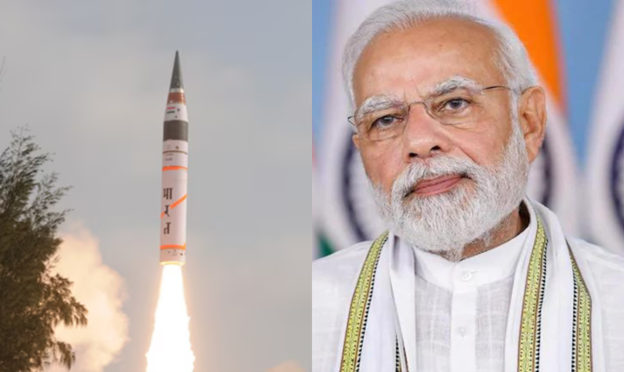Prime Minister Narendra Modi has commended the Defense Research and Development Organization (DRDO) scientists for their remarkable achievement in executing Mission Divyastra, marking a historic milestone with the first flight test of the indigenous Agni-5 missile featuring Multiple Independently Targetable Re-entry Vehicle (MIRV) technology. Expressing deep pride in the technological ingenuity showcased by DRDO scientists, PM Modi emphasized the significance of Mission Divyastra in advancing India's indigenous missile capabilities. The successful test flight of the Agni-5 missile equipped with MIRV technology symbolizes a significant leap forward in fortifying the nation's defense preparedness and strategic prowess.
"Kudos to our DRDO scientists for the success of Mission Divyastra, the inaugural flight test of the indigenous Agni-5 missiles incorporating Multiple Independently Targetable Re-entry Vehicle (MIRV) technology," PM Modi tweeted on X, celebrating the achievement.
Sources familiar with the matter disclosed that the incorporation of Multiple Independently Targetable Re-entry Vehicle (MIRV) technology into the Agni-5 missile enables a single missile to deploy multiple warheads at distinct locations, significantly enhancing its precision and capability. Notably, the project director, a woman, played a pivotal role in the seamless execution of Mission Divyastra, underscoring the valuable contributions of women in defense research and development.
With the successful test flight of Mission Divyastra, India joins an exclusive cohort of nations possessing MIRV capability. Equipped with indigenous Avionics systems and high-accuracy sensor packages, the system ensures the precise delivery of re-entry vehicles to their designated targets. Government sources hailed this achievement as a testament to India's burgeoning technological prowess on the global stage.
India has undertaken a series of tests of the Agni-5 missile in recent years. In October 2021, the Ministry of Defence announced the successful launch of the surface-to-surface ballistic missile from APJ Abdul Kalam Island, Odisha. Fueled by a three-stage solid-fuel engine, the Agni-5 boasts an impressive range of up to 5,000 kilometers with exceptional accuracy.
The successful test of the Agni-5 missile aligns with India's avowed policy of maintaining a 'credible minimum deterrence' and upholding the commitment to 'No First Use.' This reaffirms India's unwavering dedication to safeguarding its national security and strategic interests in the region.






